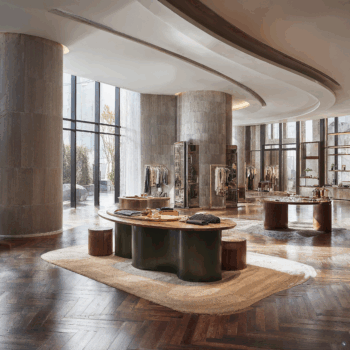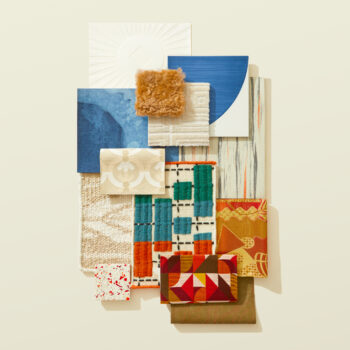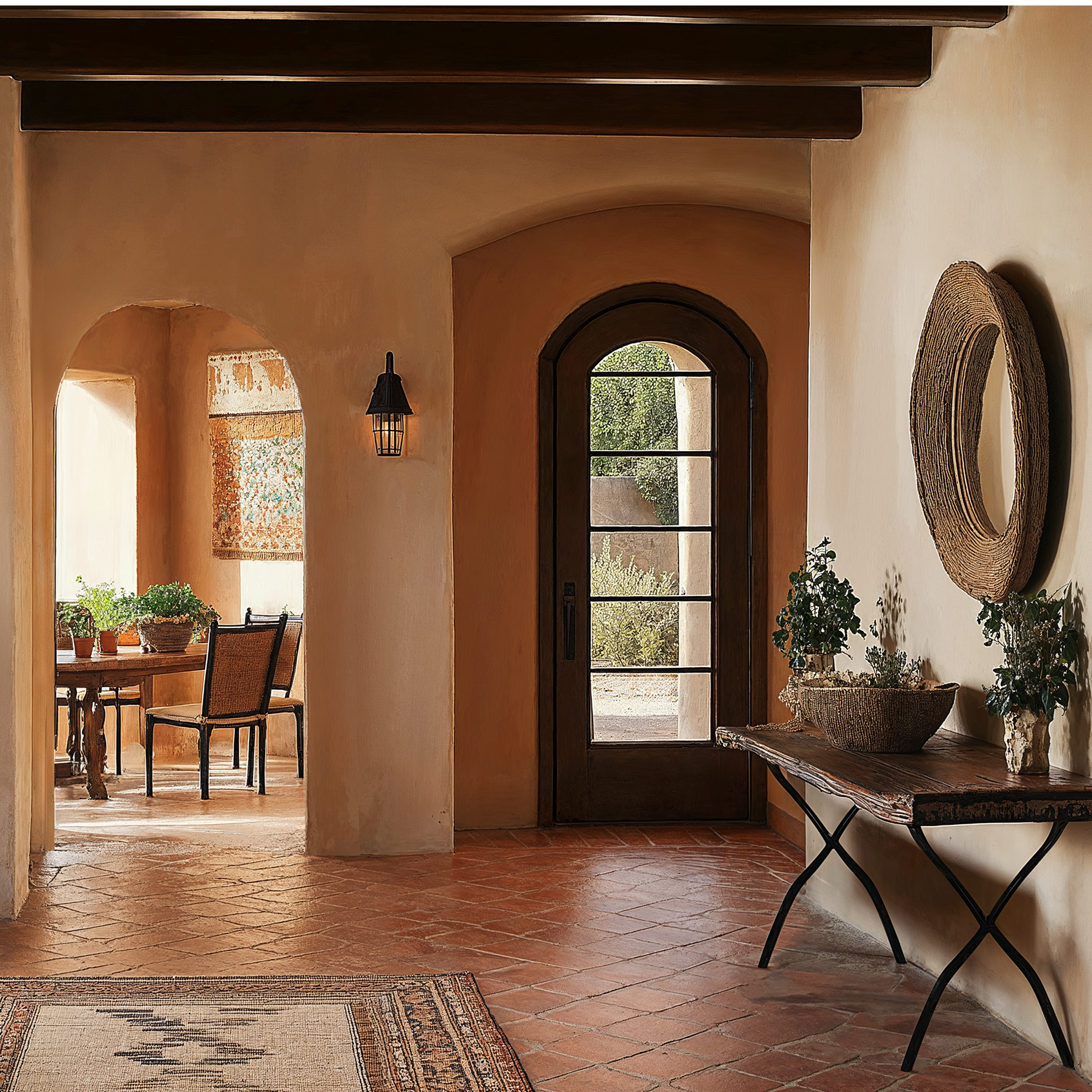
Native American Pueblo design is one of the oldest continuously practiced architectural traditions in North America. Originating with Pueblo peoples—including Hopi, Zuni, Taos, Acoma, and others—it is deeply connected to place, sustainability, and cultural expression. Traditional structures are built from adobe—sun-dried earth mixed with water and straw—and stone, forming multi-level homes organized around central plazas that reflect communal values and ceremonial space.
From the layered geometry of pueblo dwellings to the use of thick walls for climate control, Pueblo architecture offers lasting insight into building practices that are both ecologically sound and spiritually grounded. In modern applications, designers can draw inspiration from its core principles—passive design, natural materials, and communal orientation—to create spaces that are not only functional but meaningful.
The Core Principles of Pueblo Design
1.) Earth-Based Materials
Structures are traditionally made from adobe bricks, natural stone, and mud plaster, materials sourced from the surrounding environment that offer insulation, durability, and a low carbon footprint.
2.) Thermal Mass & Passive Climate Design
Thick walls regulate temperature, absorbing heat during the day and releasing it at night. Small, deeply recessed windows and flat roofs help mitigate harsh desert sun and optimize energy efficiency.
3.) Communal Layouts
Pueblo communities are arranged around shared courtyards and plazas, emphasizing collective living, shared resources, and deep social connection.
4.) Textured Simplicity & Sculpted Form
Rounded edges, organic wall shapes, and integrated benches and niches reflect an architectural style that feels carved from the earth itself—unified rather than added-on.
5.) Connection to Place
Structures are sited with spiritual and environmental awareness, often oriented to views, cardinal directions, or sacred geography. Architecture becomes an extension of the land, not separate from it.
Pueblo Design in Practice
Healthcare Spaces That Ground and Heal
Pueblo-inspired healthcare environments embrace natural clay finishes, thick walls, and ambient natural light to create a sense of calm and rootedness—supporting healing and connection.

Educational Settings with Cultural Depth
Learning environments can echo communal layouts and courtyards, using adobe tones and shaded outdoor corridors to promote concentration and a connection to place.
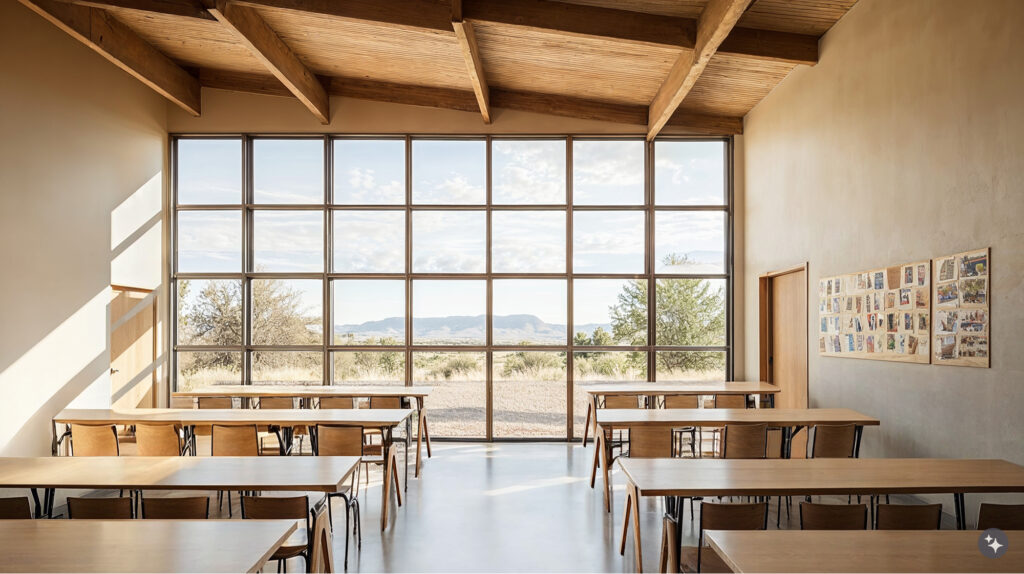
Hospitality with Earthen Warmth
Retreats and lodges that incorporate wood vigas, clay tile floors, and thick adobe walls offer immersive experiences grounded in regional history and local ecology.
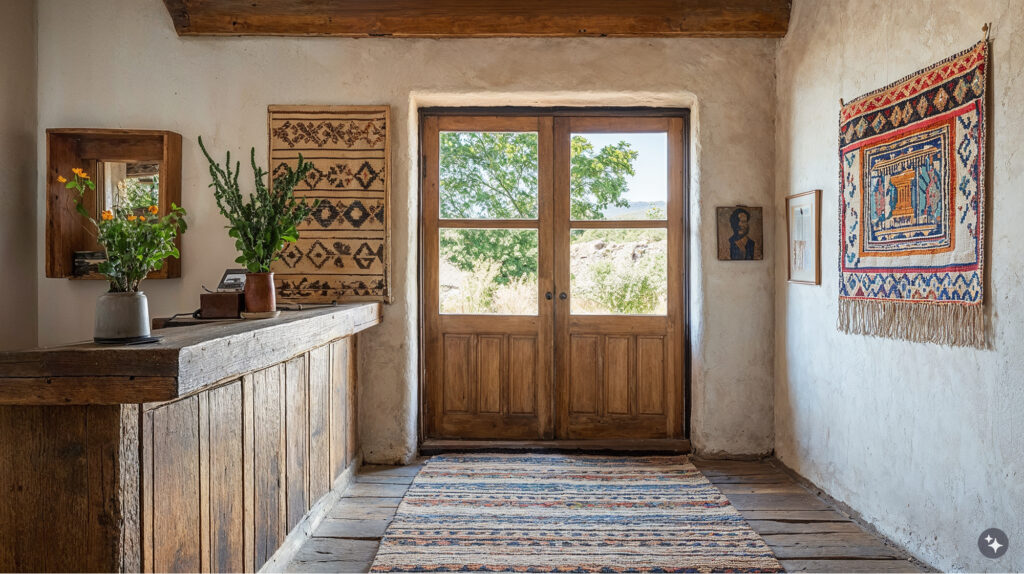
Retail Rooted in Texture and Tone
Retail spaces using raw earth tones, sculpted niches, and handcrafted shelving draw on Pueblo influence to offer sensory richness and architectural authenticity.

Transit Hubs That Reflect the Land
Pueblo-influenced transportation spaces—such as bus terminals or visitor centers—use plaster-clad forms and shaded porticos to offer shelter and harmony with the terrain.
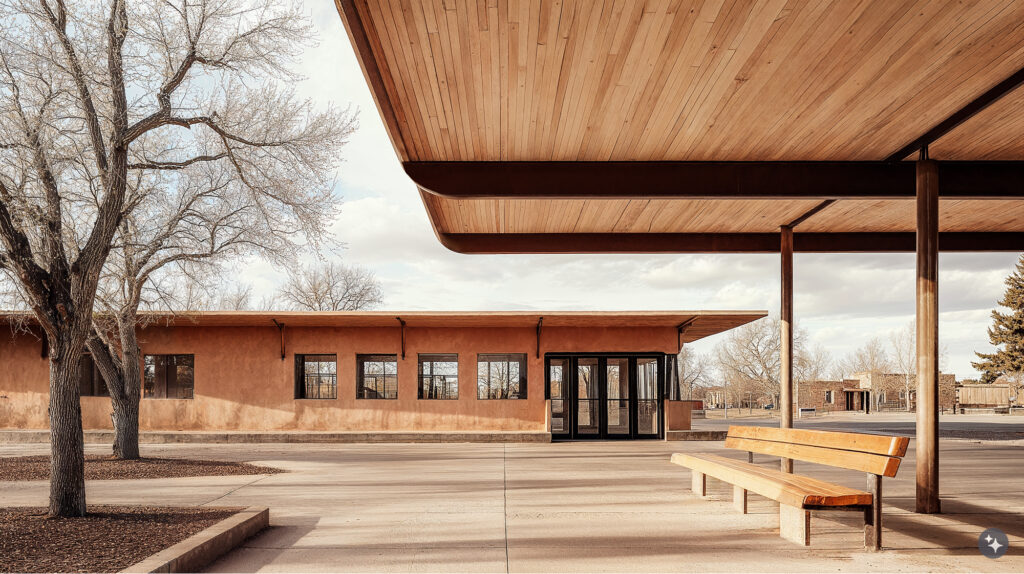
Mixed-Use Spaces That Echo the Plaza
Contemporary developments inspired by pueblo compounds use courtyard layouts, stacked forms, and communal terraces, offering flexible, walkable environments.
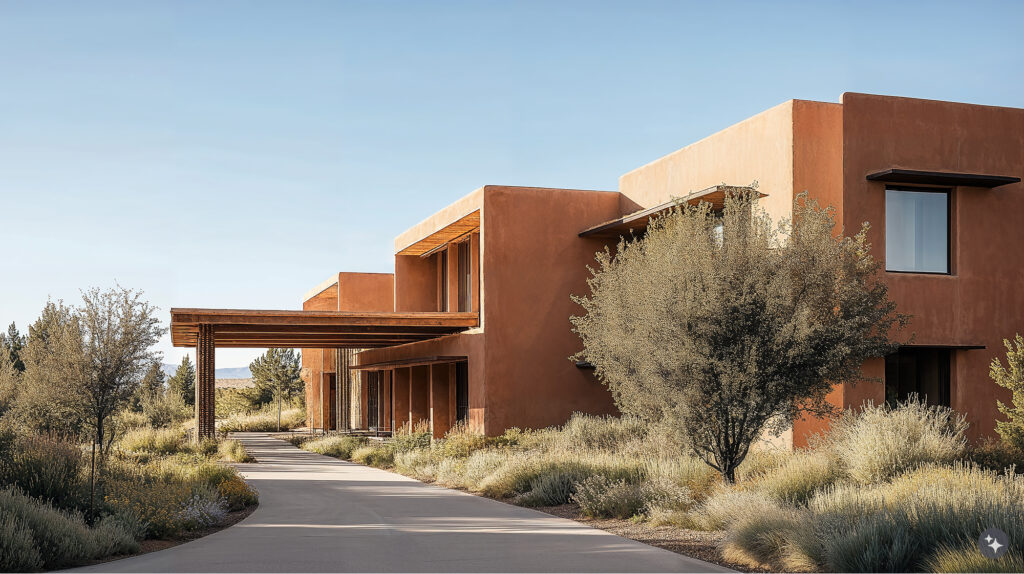
Homes with Lasting Integrity
Residential design can draw from Pueblo tradition with earthen plaster walls, corner fireplaces, and thickened transitions between rooms, creating spaces that feel timeless and integrated.
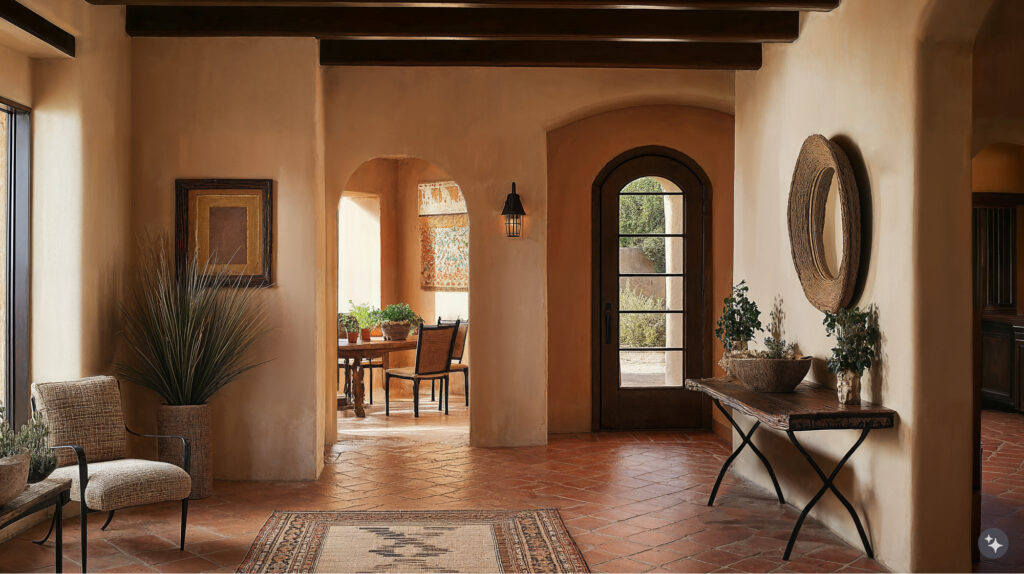
Native American Pueblo design is more than a historical style—it is a living tradition, rooted in Indigenous knowledge and sustained through a deep relationship with the land. By thoughtfully incorporating its core principles—natural materials, climate-responsiveness, and community-oriented planning—modern designers can create architecture that is not only beautiful and sustainable but respectful of its origins. When done with care and acknowledgment, Pueblo design offers timeless lessons for building with intention, place, and purpose.
For more inspiration grounded in natural textures and thoughtful geometry, explore our story on Warm Geometric Bathrooms—a subtle nod to Native American artistry in modern spaces.





